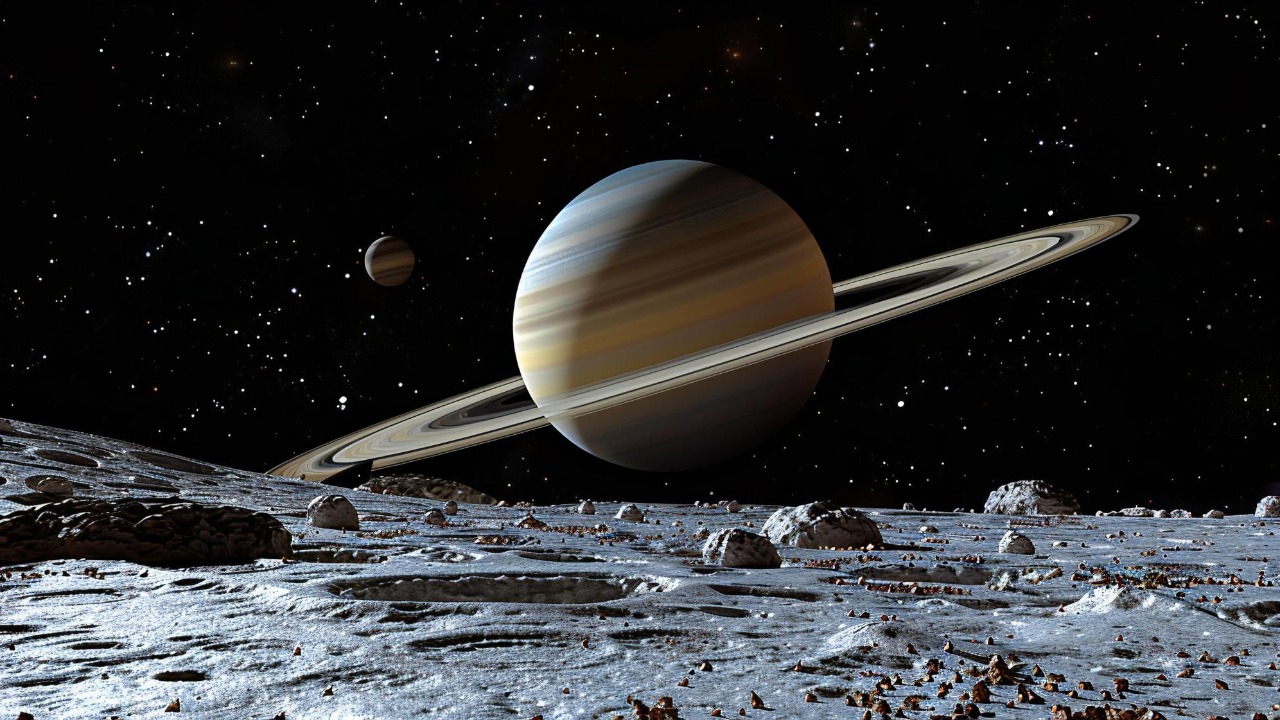
NASA’s recent study on Saturn’s moon Titan has revealed the unexpected mixing of molecules previously thought impossible to combine, effectively breaking one of chemistry’s oldest rules regarding molecular interactions in extreme environments. This bizarre discovery, challenging preconceived notions of chemistry before life emerged, was detailed in reports from October 16 to 17, 2025, highlighting Titan’s unique atmospheric and surface conditions that enable such anomalies. An earlier related finding in April 2025 described a strange material on Titan that similarly breaks rules, now amplified by this new evidence of molecular defiance.
The Unique Environment of Titan
Titan, Saturn’s largest moon, presents a unique environment with its thick nitrogen-rich atmosphere and hydrocarbon lakes, creating conditions for exotic chemistry unlike anywhere else in the solar system. These conditions set the stage for the observed molecular anomalies that have intrigued scientists. The moon’s atmosphere and surface are rich in organic compounds, which, combined with its low temperatures and pressure, allow for chemical interactions that defy traditional Earth-based chemistry rules. According to Science Daily, these conditions are crucial for the stability of unexpected molecular combinations.
Titan’s extreme cold temperatures and low gravity further contribute to the stability of these unexpected molecular combinations. As reported by Daily Galaxy, these factors allow for the formation of stable bonds among complex hydrocarbons, which would typically be unstable under Earth’s conditions. The moon’s organic-rich dunes and surface features, preserved from Cassini-Huygens mission data, are key locations where these rule-breaking interactions were detected, as noted by AZoM.
NASA’s Key Findings on Molecular Mixing
The NASA study from October 17, 2025, highlights Titan’s ability to mix molecules thought impossible to combine, such as complex hydrocarbons forming stable bonds under Titan’s unique conditions. This discovery was detailed in a report by Asianet News, which emphasized the significance of these findings in challenging our understanding of chemical bonding.
Unexpected chemical reactions in Titan’s atmosphere have been observed, challenging traditional views on molecular stability. These reactions, reported by Science Daily, suggest that Titan’s environment allows for chemistry that operates beyond established limits. Spectroscopic data from NASA’s missions have revealed these bizarre molecular structures, providing evidence of chemistry that defies conventional understanding.
Challenging Prebiotic Chemistry Paradigms
The discovery on Titan upends traditional views on chemistry before life emerged, suggesting alternative pathways for organic molecule formation in extraterrestrial settings. As reported by Daily Galaxy, this finding has significant implications for our understanding of prebiotic chemistry and the potential for life beyond Earth.
The implications for abiogenesis models are profound, as Titan’s rule-breaking molecules indicate that life’s building blocks could arise in ways previously deemed chemically impossible. This challenges existing theories and suggests that the conditions on Titan could provide insights into the origins of life in the universe, as noted by AZoM. Scientists are now scrambling to explain these findings, emphasizing the need to rethink non-Earth-like chemical evolution.
Connections to Earlier Physics-Breaking Material
The October 2025 discoveries on Titan are linked to an earlier report from April 2025, which described a strange material on the moon that breaks the rules of physics. This material, potentially the same anomalous substance enabling chemical rule violations, was highlighted by SciTechDaily. The properties of this material, observed via remote sensing, provide foundational evidence for the molecular mixing seen in recent studies.
This continuity in research, where the April 2025 finding prompted deeper NASA analysis, led to the October confirmations of chemistry’s oldest rules being broken. The connection between these physics and chemistry anomalies underscores the importance of continued exploration and study of Titan’s unique environment, as reported by Daily Galaxy.
Future Implications and Research Directions
NASA plans to conduct follow-up observations and missions to further probe Titan’s surface for more examples of these unexpected molecular behaviors. According to Asianet News, these efforts aim to deepen our understanding of Titan’s chemistry and its implications for astrobiology.
The broader impacts on astrobiology are significant, as the unexpected discovery on October 16, 2025, prompts a reevaluation of chemical possibilities on other icy moons or exoplanets. As noted by AZoM, this could lead to new insights into the potential for life in the universe and inspire new lab simulations on Earth to replicate and study these phenomena.
The rule-breaking on Titan, combined with the April 2025 material, could inspire new laboratory simulations on Earth to replicate and study these phenomena. This approach, as highlighted by SciTechDaily, could provide valuable insights into the fundamental principles of chemistry and physics, potentially leading to breakthroughs in our understanding of the universe.